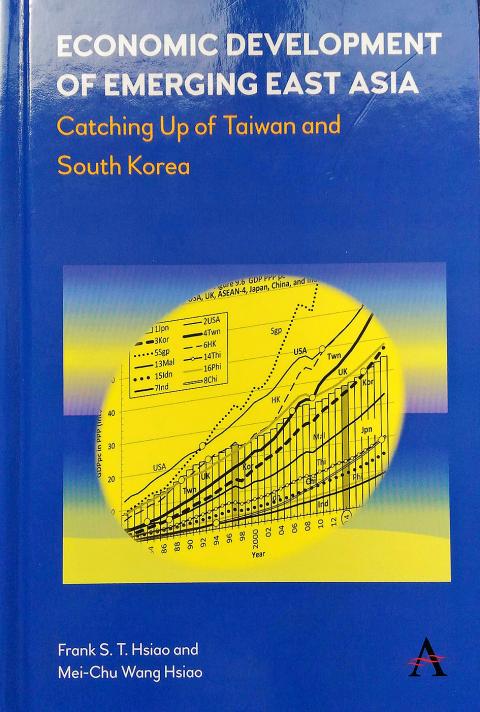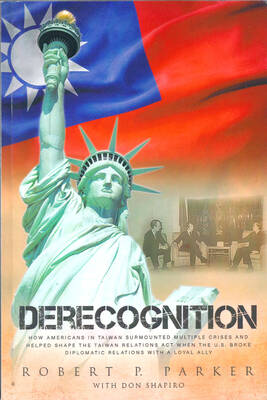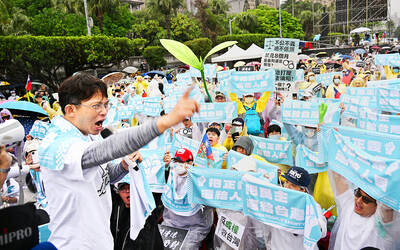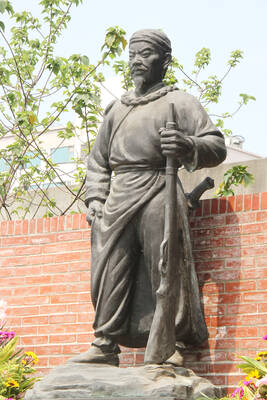In Economic Development of Emerging East Asia: Catching up of Taiwan and South Korea, Professors Frank Hsiao (蕭聖鐵) and Mei-Chu Wang Hsiao (蕭王美珠) have taken up where they left off in examining economic development in East Asia.
This work extends beyond their earlier work, Economic Development of Taiwan, Early Experiences and the Pacific Trade Triangle reviewed in the Taipei Times (“Re-examining the Taiwan Miracle,” June 18, 2015) and compares Taiwan’s economic development with that of South Korea and Japan.
However, readers should be forewarned; this highly researched book is not a quick read. Replete with tables, figures and graphs that compare Capital Flow and Exchange Rates and Productivity Growth, it primarily seeks insights as it determines each nation’s GDP per Capita in terms of Purchasing Power Parity.

The book is suited to those with a strong technical research interest on the economic development of East Asia, but its end hope is that such results can also provide direction for the emerging economies of African and Latin American countries.
The book has two parts: Part One focuses on the comparative economic growth and development of Taiwan and Korea; Part Two examines the “catching up and convergence” of those two with Japan and then that of all three with the US.
While it is not a quick read and delves into over a century of economic development, this book nonetheless has several immediate strong points for the average reader.
First, each chapter begins with an explanatory abstract to prep the reader for the technical data that follows, and has concluding remarks that review key points.
Additionally, all chapters, except for the final ninth chapter, have appeared in economic journals. Thus, each chapter has already undergone steep individual vetting on its research quality and information. This also explains why each chapter has anywhere from 20 to 50 or more references at its end.
The work further provides an additional contrasting and provocative perspective: an emphasis on the beneficial and influential aspects of Japan’s colonialism on the developing economies of Korea and Taiwan. This positive emphasis on colonialism will, no doubt, not play as well in Korea, since the two nations have had totally different colonial background experiences.
Chapter 5, the final chapter in Part One, diverges from the Korea/Taiwan comparisons. It contrasts India’s colonial benefits under the UK with those of Taiwan, especially in light of each nation’s postwar economic development. Surprisingly and against expectations of size, Taiwan has fared the better of the two. This is attributed to Japan’s specific emphasis on health and education.
In Part Two, chapters six through eight examine the convergence of the economies of Korea, Taiwan and Japan. Here, both Korea and Taiwan are held as role models for successful development.
Still, while these chapters focus on the development of countries in the Asian Miracle from the 1970s up until the 1997 recession, the authors also have a word of caution. Any development no matter how good has its limits as the recession brought out. Nothing is guaranteed.
Nonetheless, it was after this period, that by 2010, Korea had pretty well caught up with Taiwan and both of course are seen gaining on Japan.
As in their earlier book on the Taiwan Miracle, Taiwan’s “outstanding economic performance and catching-up process” in GDP is often the result of the “hardworking Taiwanese.” Their performance is “stellar and astonishing” in comparison with other countries in the region.
A key factor in Taiwan’s success is that it became the “Republic of Technology” and had the colonial base of an advanced country. One may be tempted to feel this is a natural bias, but any challenge must be done to the figures and charts provided to support such claims.
It is in the final chapter, that the question and role of China in Taiwan’s economic development is addressed. This key issue is one that is raised by three prepublication reviewers when they asked the inevitable: “Does Taiwan’s economy rely too much on China’s larger economy?”
The answer is that “for catching up in terms of GDP per capita, economic size may not matter.” However, this does not deny that China can be a very influential and powerful nation in the region.
As said, this work is highly technical and aspects of it may be more suited to those in the social sciences and economics. With its many charts and technical references, the authors even suggest it could be used as a text book or model for “writing research papers in regional development studies.”
Finally, every book risks being dated as soon as it comes out. So now one wonders whether the authors would reconsider any responses in lieu of the potential impact on Asian economies by US President Donald Trump imposing newly threatened tariffs. Or, would the passage of the Taiwan Travel Act positively or negatively impact economic matters in the region?
Regardless, the authors conclude with a final optimistic note: All data indicates not only that East Asia is still economically emerging but there also appears “no reason to discount the future possibility of an Asia-centered world economy.”

One of the biggest sore spots in Taiwan’s historical friendship with the US came in 1979 when US president Jimmy Carter broke off formal diplomatic relations with Taiwan’s Republic of China (ROC) government so that the US could establish relations with the People’s Republic of China (PRC). Taiwan’s derecognition came purely at China’s insistence, and the US took the deal. Retired American diplomat John Tkacik, who for almost decade surrounding that schism, from 1974 to 1982, worked in embassies in Taipei and Beijing and at the Taiwan Desk in Washington DC, recently argued in the Taipei Times that “President Carter’s derecognition

This year will go down in the history books. Taiwan faces enormous turmoil and uncertainty in the coming months. Which political parties are in a good position to handle big changes? All of the main parties are beset with challenges. Taking stock, this column examined the Taiwan People’s Party (TPP) (“Huang Kuo-chang’s choking the life out of the TPP,” May 28, page 12), the Democratic Progressive Party (DPP) (“Challenges amid choppy waters for the DPP,” June 14, page 12) and the Chinese Nationalist Party (KMT) (“KMT struggles to seize opportunities as ‘interesting times’ loom,” June 20, page 11). Times like these can

JUNE 30 to JULY 6 After being routed by the Japanese in the bloody battle of Baguashan (八卦山), Hsu Hsiang (徐驤) and a handful of surviving Hakka fighters sped toward Tainan. There, he would meet with Liu Yung-fu (劉永福), leader of the Black Flag Army who had assumed control of the resisting Republic of Formosa after its president and vice-president fled to China. Hsu, who had been fighting non-stop for over two months from Taoyuan to Changhua, was reportedly injured and exhausted. As the story goes, Liu advised that Hsu take shelter in China to recover and regroup, but Hsu steadfastly

You can tell a lot about a generation from the contents of their cool box: nowadays the barbecue ice bucket is likely to be filled with hard seltzers, non-alcoholic beers and fluorescent BuzzBallz — a particular favorite among Gen Z. Two decades ago, it was WKD, Bacardi Breezers and the odd Smirnoff Ice bobbing in a puddle of melted ice. And while nostalgia may have brought back some alcopops, the new wave of ready-to-drink (RTD) options look and taste noticeably different. It is not just the drinks that have changed, but drinking habits too, driven in part by more health-conscious consumers and